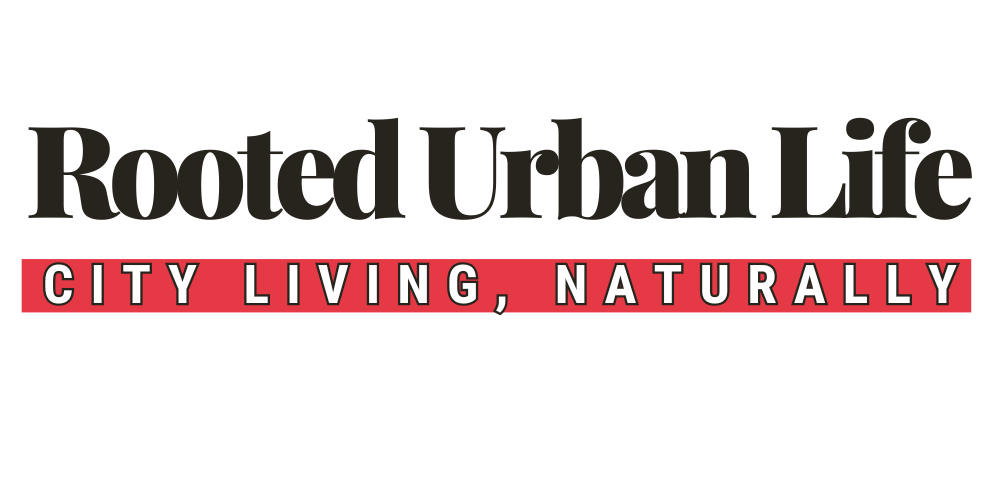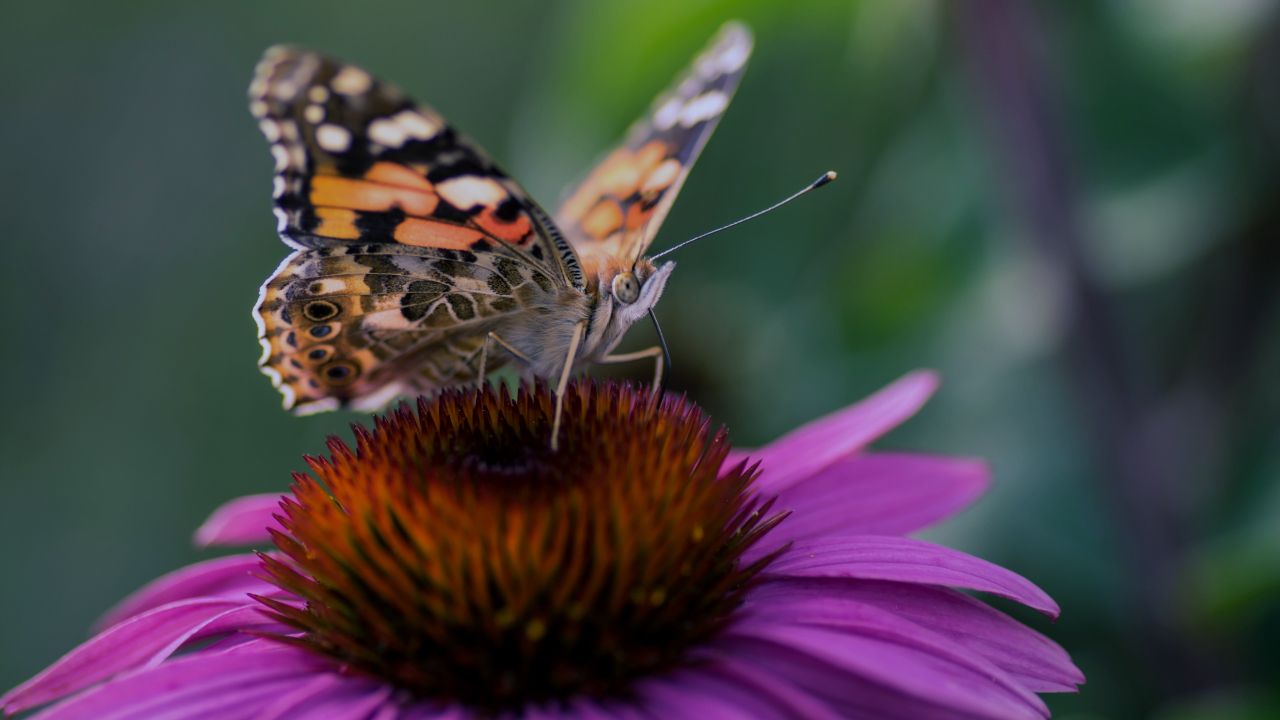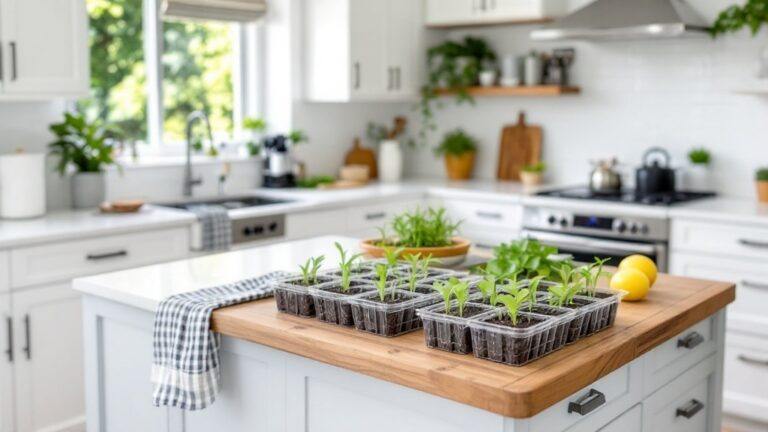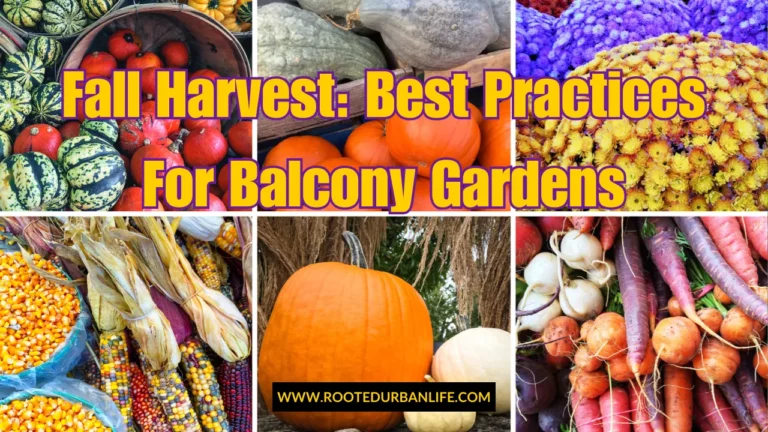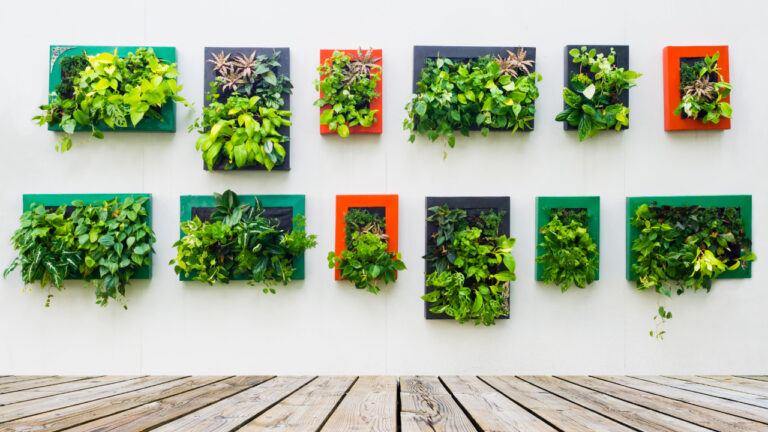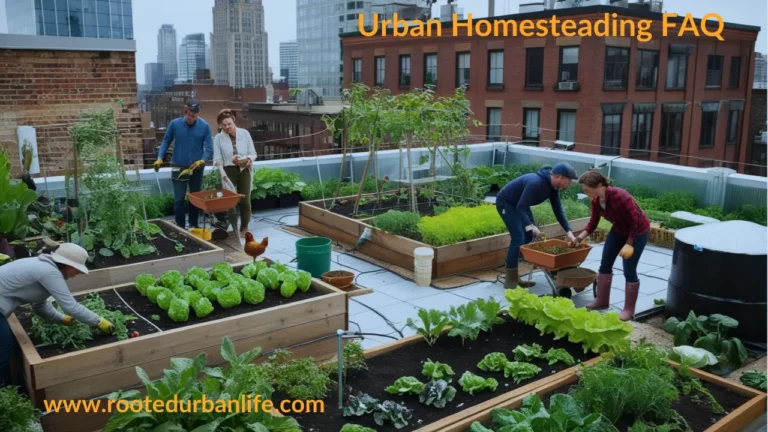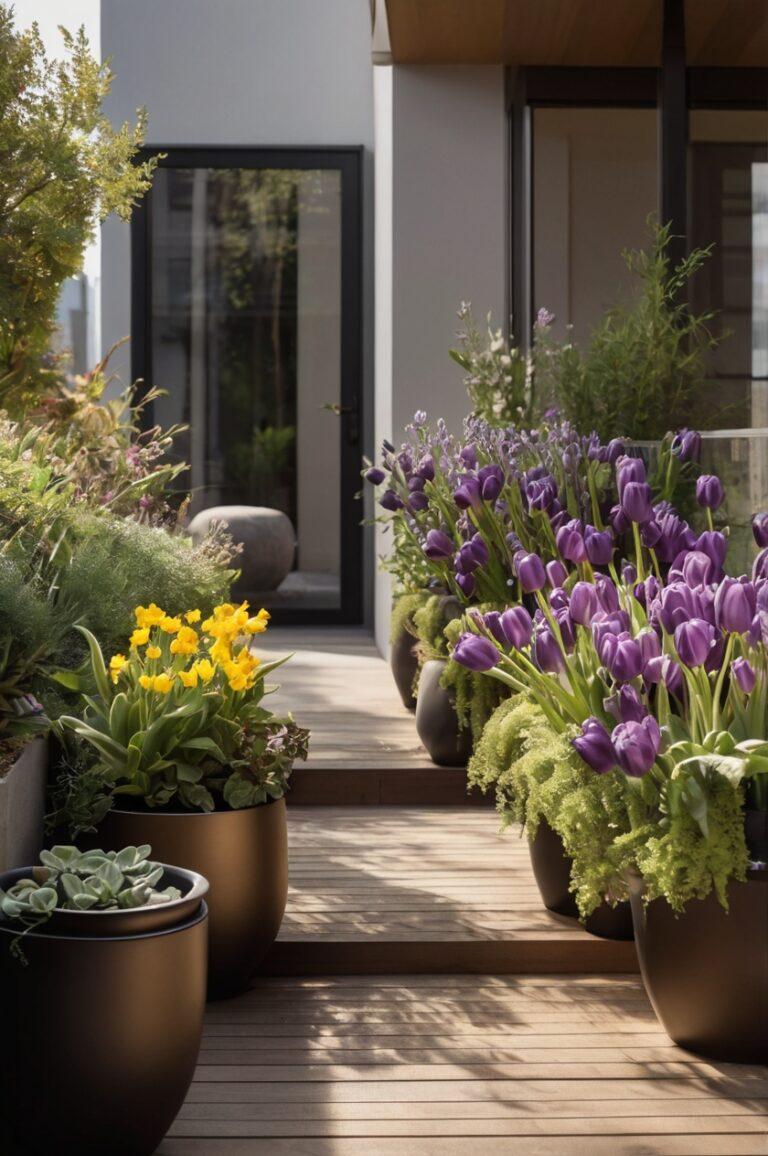Native Plants: Transform Your Small Space Into an Urban Wildlife Haven
How Native Plants Create Thriving Ecosystems in Tiny Urban Spaces
The Problem: Urban living often disconnects us from nature, leaving us with small concrete spaces that feel lifeless and contribute little to our environment. Many city dwellers believe that meaningful gardening requires large spaces, specialized knowledge, and constant maintenance.
What You’ll Learn: This guide will show you how to transform even the smallest urban space into a thriving ecosystem using native plants. You’ll discover which indigenous plants work best in containers, how they benefit wildlife and the environment, and simple techniques to create a low-maintenance garden that connects you to your region’s natural heritage.
By the end, you’ll have the knowledge and confidence to turn even a tiny balcony into a vibrant native plant sanctuary that supports local wildlife while requiring minimal effort to maintain.
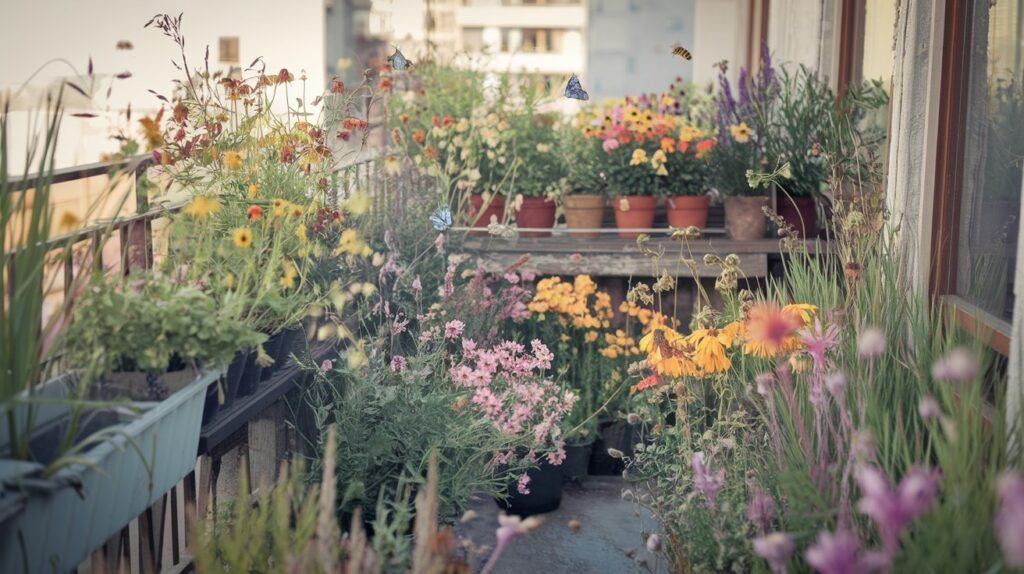
1 What Makes a Plant “Native”?
What We Love: Native plants aren’t just random local vegetation – they’re sophisticated organisms that have evolved specific adaptations to thrive in your exact growing conditions without human intervention.
Key Features:
- Evolved in your region for thousands of years through natural selection
- Perfectly adapted to local soil composition, rainfall patterns, and seasonal changes
- Developed symbiotic relationships with local wildlife and pollinators
- Capable of surviving regional weather extremes without special protection
Perfect For: Gardeners seeking low-maintenance, environmentally responsible planting options that create authentic connections to their region’s natural heritage.
Adaptation Superstars
The prickly pear cactus demonstrates remarkable adaptation by storing water in its fleshy pads – a perfect drought-survival strategy in arid regions.
The compass plant sends roots up to 15 feet deep to access water during dry periods, simultaneously improving soil structure and preventing erosion – engineering that would make any architect jealous.
2 The Remarkable Benefits of Going Native
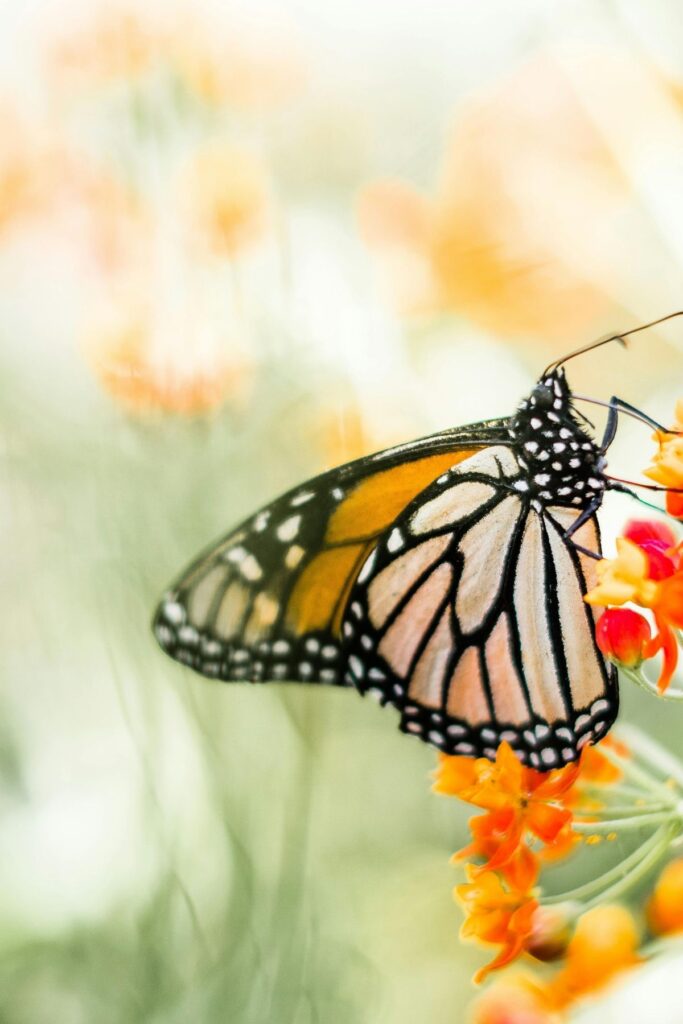
Ecological Powerhouses
What We Love: Native plants transform even the smallest balcony into a functioning ecosystem that supports countless species.
Key Features:
- Provide essential food sources for local and migratory wildlife
- Create habitat in urban “dead zones” where wildlife struggles to survive
- Support specialized relationships with native pollinators
- Contribute to preserving biodiversity in increasingly fragmented habitats
Perfect For: Urban gardeners who want their small space to make a genuine environmental impact.
Ecological Champion: Milkweed serves as the exclusive food source for monarch butterfly larvae, making your balcony a crucial link in their survival. Without milkweed, no monarchs – it’s that simple.
Effortless Maintenance
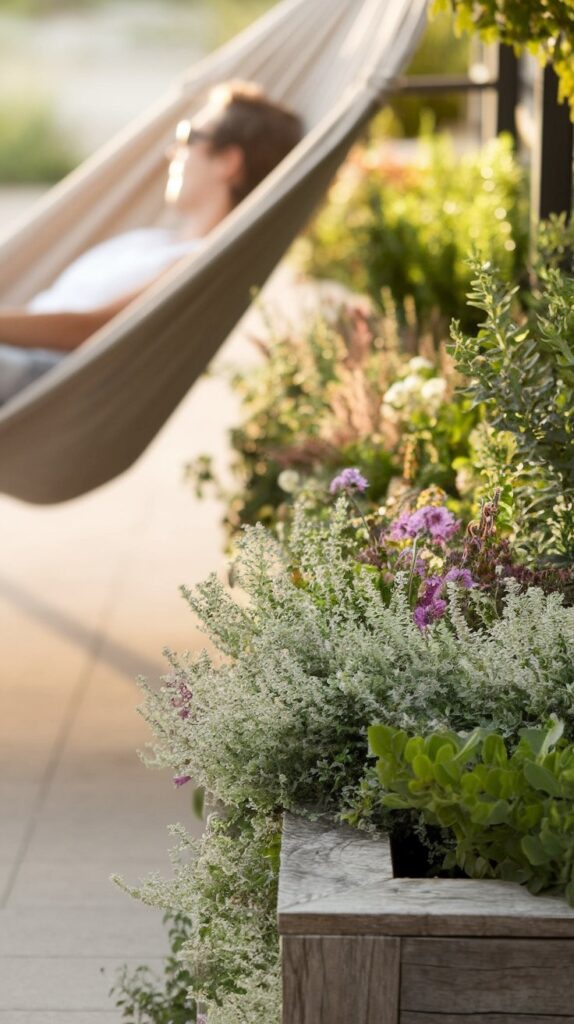
What We Love: Native plants dramatically reduce the time, money, and resources needed to maintain a beautiful garden.
Key Features:
- Require significantly less watering once established
- Naturally resistant to local pests and diseases
- Thrive without chemical fertilizers or pesticides
- Adapted to regional weather extremes and seasonal patterns
Perfect For: Busy urban gardeners who want beautiful outdoor spaces without weekend-consuming maintenance routines.
Pro Tip: Group plants with similar water and light requirements together to further streamline care. Your drought-tolerant black-eyed Susans won’t appreciate being planted with moisture-loving ferns!
Stunning Visual Appeal
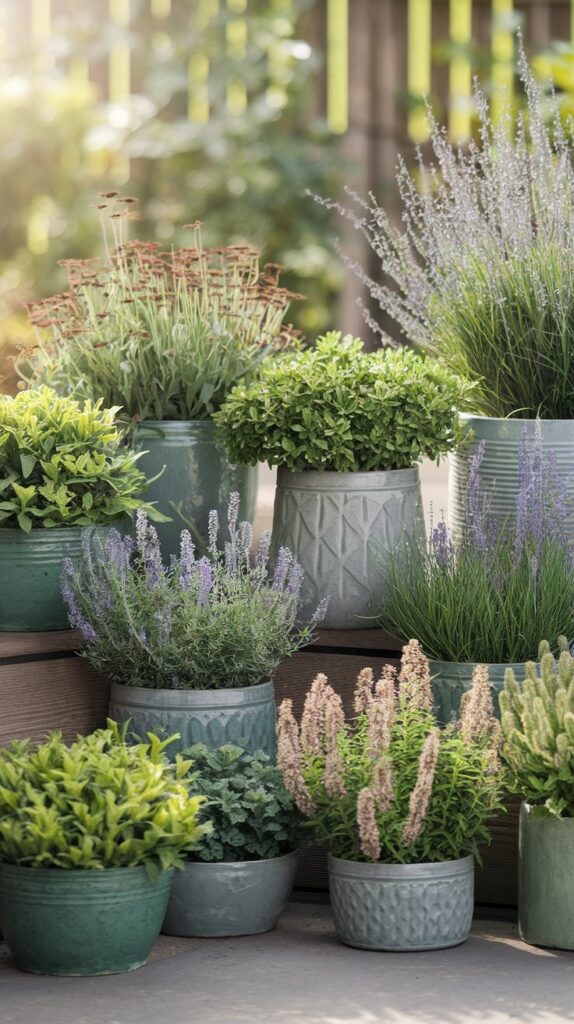
What We Love: Native plants offer remarkable aesthetic diversity that rivals or exceeds non-native ornamentals, with options for every design preference.
Key Features:
- Extraordinary range of colors, textures, and growth habits
- Year-round visual interest through seasonal changes
- Unique forms not found in common commercial plants
- Natural combinations that create harmonious compositions
Perfect For: Design-conscious gardeners seeking distinctive plant combinations that stand out from cookie-cutter landscaping.
Visual Standouts:
- Black-eyed Susan and Purple Coneflower create vibrant color displays while attracting pollinators
- Cardinal Flower’s brilliant red blooms draw hummingbirds like magnets
- Native grasses add movement, sound, and winter interest when other plants have died back
Environmental Climate Heroes
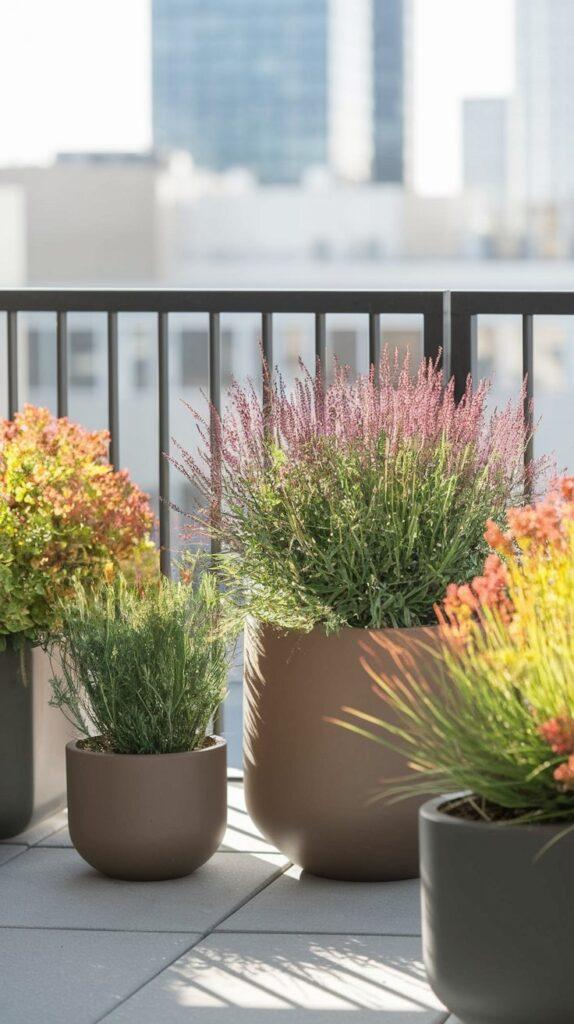
What We Love: Native plants actively combat urban environmental challenges, functioning as micro-infrastructure that improves living conditions.
Key Features:
- Combat urban heat island effect through evaporative cooling
- Manage stormwater runoff through superior water absorption
- Sequester carbon dioxide more effectively than non-natives
- Reduce air pollution by trapping particulate matter
Perfect For: Environmentally conscious urbanites looking to make their living space more sustainable.
Environmental Impact: Deep-rooted native grasses can absorb up to 7 times more water during heavy rains than typical lawn grass, reducing flooding and water pollution in urban areas.
Wildlife Habitat Creation
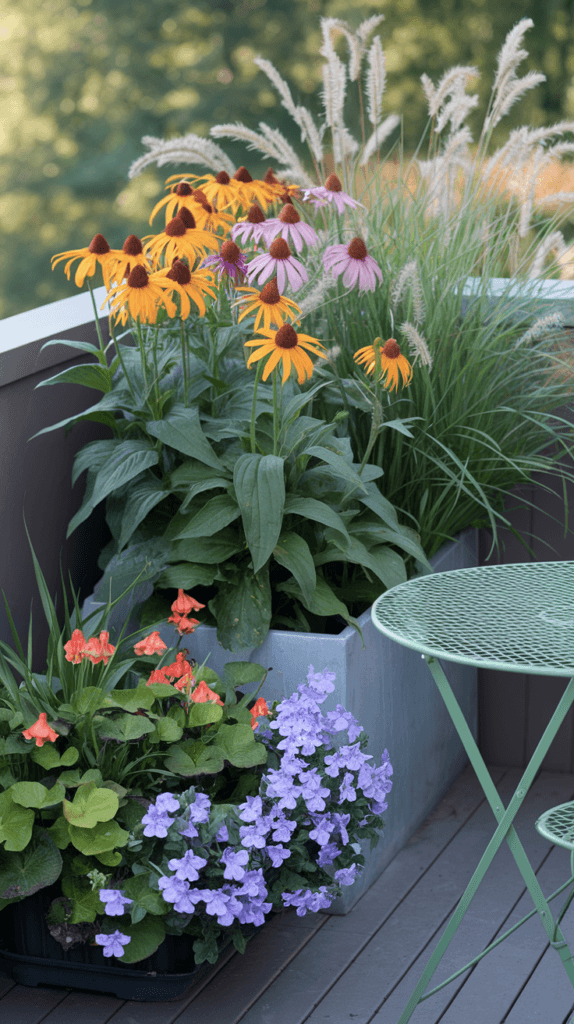
What We Love: Native plants transform lifeless urban spaces into vibrant wildlife habitats that support entire food webs.
Key Features:
- Provide specialized nectar sources for pollinators
- Produce berries and seeds that feed birds through winter
- Create shelter for beneficial insects and small wildlife
- Support specialist species that can’t use non-native plants
Perfect For: Nature enthusiasts who want to observe wildlife up close in urban environments.
Wildlife Magnet: Evening primrose opens its flowers at dusk, attracting night-flying moths for pollination – perfect for urban areas where daytime pollinators like bees may be less common.
Cultural and Educational Significance
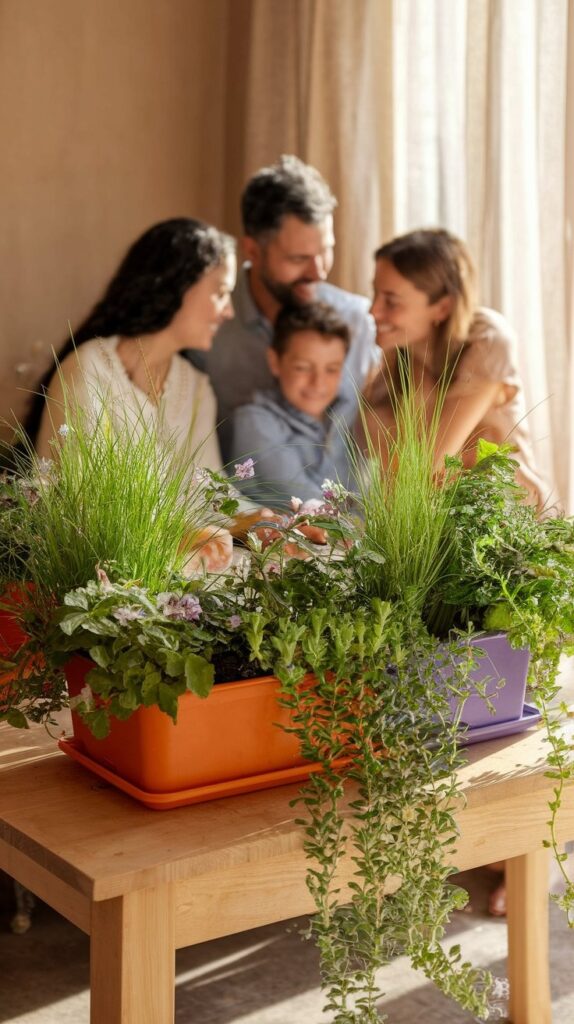
What We Love: Native plants connect us to cultural heritage and create opportunities for meaningful learning experiences.
Key Features:
- Link to traditional uses for food, medicine, and crafts
- Create opportunities for intergenerational knowledge sharing
- Provide living laboratories for understanding ecology
- Foster community connections through shared stewardship
Perfect For: Families, educators, and those seeking deeper connections to place and tradition.
Cultural Connection: Yarrow, native to many regions, has been used for centuries to treat wounds and reduce inflammation – a living connection to traditional ecological knowledge.
Native Plant Readiness Ritual
Before you plunge your hands into the soil of possibility, take a moment to gather your essentials. This preparation ritual not only ensures success but honors the intentional nature of welcoming native plants into your space. Each checked item represents another thread in the tapestry of your growing relationship with the natural world.
3 Small-Space Native Garden Implementation
Container Selection Strategies
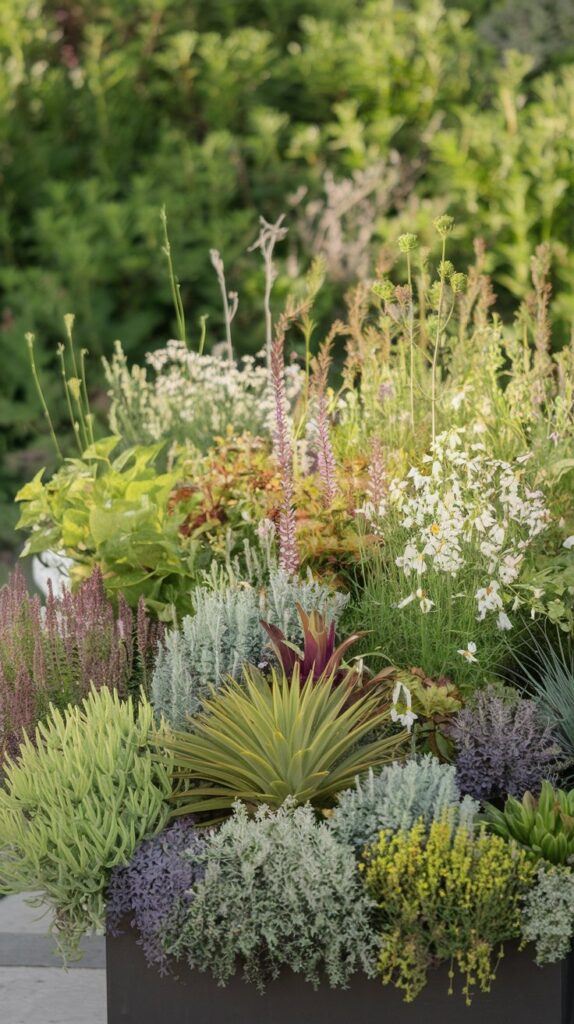
| Disclosure: If you shop from my article or make a purchase through one of my links, I may receive commissions on some of the products I recommend at no additional cost to you. |
What We Love: The right containers can create perfect growing conditions for native plants while enhancing your space’s aesthetic.
Key Features:
- Deep containers accommodate root systems of prairie plants
- Lightweight options make seasonal rearrangement possible
- Self-watering designs reduce maintenance for busy gardeners
- Recycled materials add sustainability and unique character
Perfect For: Urban gardeners with limited space who want to maximize planting options.
Explore Containers With the Drainage Native Plants Require
Space-Maximizing Techniques
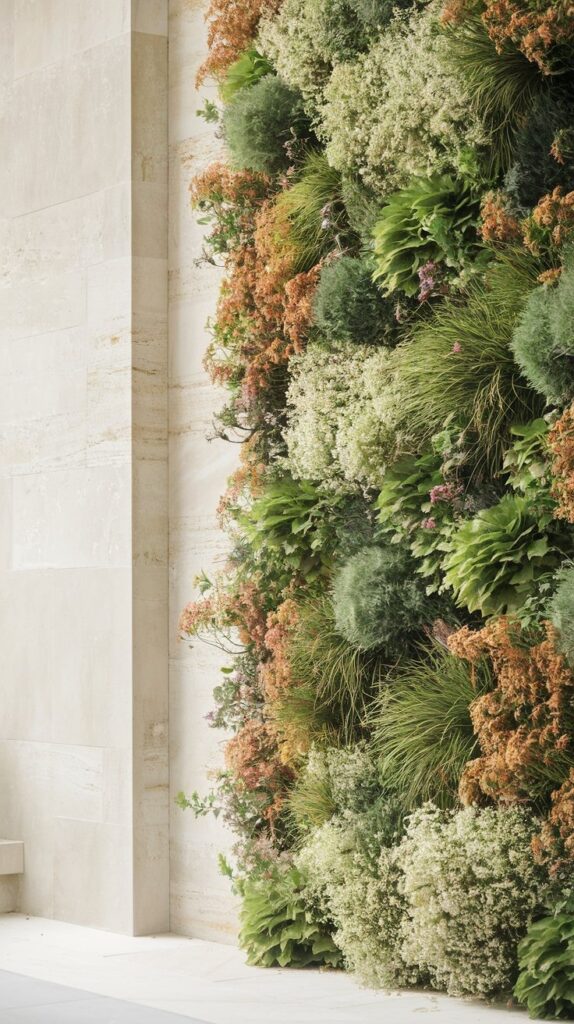
What We Love: Strategic design approaches can double or triple your planting capacity without requiring more floor space.
Key Features:
- Vertical growing systems utilize wall and railing space
- Layered planting creates multiple growing zones in one container
- Hanging options activate unused overhead areas
- Corner maximizers turn dead space into growing opportunities
Perfect For: Balcony and patio gardeners working with extremely limited square footage.
Space-Saving Star: Native honeysuckle (Lonicera sempervirens) grows vertically on trellises, attracting hummingbirds while taking up minimal floor space.
Discover Movable Space-Saving Native Garden Solutions
Microhabitat Creation
What We Love: Even the smallest spaces can host multiple ecological niches that support diverse plant communities.
Key Features:
- Strategic placement creates sun/shade gradients
- Container groupings modify moisture conditions
- Hardscape elements create temperature variations
- Soil customization accommodates specialized plants
Perfect For: Plant enthusiasts who want to grow a wide variety of native species in limited space.
Microhabitat Magic: A partially shaded corner can host native ferns and hostas, while a sunny spot just feet away can support prairie flowers – recreating natural ecosystem diversity in miniature.
4 Seasonal Care Calendar
Spring (March-May)
What to Plant:
- Install summer and fall blooming perennials
- Start seeds for annual natives
- Divide overcrowded perennials from previous year
What to Enjoy:
- Spring ephemerals like trillium and bloodroot
- Early bloomers like Virginia Bluebells
- The emergence of native ferns as they unfurl
Maintenance Tasks:
- Remove winter protection
- Apply light organic mulch to new plantings
- Begin regular observation to identify emerging issues
Summer (June-August)
What to Plant:
- Fall-blooming species (early summer only)
- Replace any spring failures
- Collect and store seeds for next year
What to Enjoy:
- Peak flowering of Purple Coneflower and Black-eyed Susan
- Butterfly and bee activity at its highest
- The dramatic vertical element of native grasses
Maintenance Tasks:
- Deadhead spent blooms to encourage more flowering
- Monitor for water stress during heat waves
- Minimal weeding thanks to established native plant coverage
Fall (September-November)
What to Plant:
- Spring-blooming perennials and bulbs
- Woody shrubs and small trees
- Divide and replant summer bloomers
What to Enjoy:
- New England Aster and Goldenrod in full bloom
- Colorful berries on winterberry holly
- Seed heads providing food for birds
Maintenance Tasks:
- Leave seed heads and dead stalks for winter wildlife habitat
- Collect seeds for spring planting
- Apply mulch for winter protection if needed
Winter (December-February)
What to Plant:
- Nothing outdoors – focus on planning!
- Start slow-germinating species indoors
- Stratify seeds that need cold treatment
What to Enjoy:
- Architectural elements of native grasses in snow
- Colorful bark on shrubs like red-osier dogwood
- Birds visiting to feed on persistent seeds and berries
Maintenance Tasks:
- Research and plan next year’s additions
- Order seeds and plants for spring
- Minimal intervention – let nature take its course
Four-Season Native Plant Care Checklist
Track your native garden’s needs throughout the year with this straightforward checklist. These key maintenance tasks follow your plants’ natural cycles—requiring minimal intervention while maximizing resilience and beauty. Use this guide to ensure your native sanctuary thrives through each season’s unique challenges and opportunities.
Note: Your progress won’t be saved online – download our printable checklist to track your native plant journey over time!
5 Debunking Native Plant Myths
Myth 1: “Native Plants Are Too Wild-Looking for My Manicured Space”
Reality: Many native plants have neat, compact growth habits that fit perfectly in formal settings. Plants like prairie dropseed grass form tidy mounds, while blazing star creates perfect vertical accents.
Designer Tip: Group natives in organized patterns and maintain clear edges to create a more structured look while retaining ecological benefits.
Myth 2: “Native Plants Are Too Big for My Small Space”
Reality: Many indigenous species naturally stay compact or have dwarf varieties specifically bred for small spaces.
Small-Space Stars:
- Wild strawberry (ground cover, 3-6″ tall)
- Creeping phlox (trailing, 3-8″ tall)
- Prairie smoke (compact perennial, 6-12″ tall)
- Little bluestem grass (ornamental grass, 2-3′ tall)
Myth 3: “Native Plants Attract Pests and Look Messy”
Reality: Native plants actually create balanced ecosystems where beneficial insects control pest populations naturally.
Research Insight: Studies show that gardens with at least 70% native plants maintain pest populations below damage thresholds without intervention, as natural predators keep them in check.
Myth 4: “Native Plants Are Difficult to Find and Expensive”
Reality: While specialized native plant nurseries exist, many common natives are now available at mainstream garden centers and through online specialists.
Resource Tip: Join native plant societies for plant swaps, seed exchanges, and divided perennials that can significantly reduce costs while connecting you with experienced growers.
6 Getting Started: Your First Native Plant Container
What You’ll Need:
- Container (12″ or larger) with drainage holes
- Native plant potting mix (lighter than garden soil)
- 3-5 native plants with similar growing requirements
- Light organic mulch
- Watering can with gentle shower head
Steps:
- Fill container 2/3 full with potting mix
- Arrange plants while still in nursery pots to find pleasing composition
- Plant tallest species toward back/center, trailing species near edges
- Leave 1″ between soil and container rim for watering space
- Apply light mulch layer to retain moisture
- Water thoroughly until water drains from bottom
Beginner-Friendly Combinations:
For Sun:
- Black-eyed Susan
- Purple Coneflower
- Prairie Dropseed Grass
For Shade:
- Coral Bells
- Wild Ginger
- Woodland Phlox
7 Plant Explorer’s Journal
Transform your garden into a living laboratory where discovery happens daily. This checklist helps you and your children document the remarkable journey of your native plants from first planting to full establishment—capturing those magical moments when your small space begins to buzz with life and vibrant growth.
Note: Your progress won’t be saved online – download our printable checklist to track your native plant journey over time!
8 FAQ
Q: How often should I water my native plant containers?
A: While establishing (first month), keep soil consistently moist. After establishment, most native plant containers need watering only when the top 2″ of soil feels dry. In hot summer weather, this might be every 2-3 days; in cooler weather, perhaps weekly.
Q: Can I mix native and non-native plants in the same container?
A: Yes, but choose non-natives with similar water and light requirements. Be aware that some non-natives may outcompete natives if they have aggressive growth habits. Aim for at least 70% native plants to maintain ecological benefits.
Q: Do native plants need fertilizer?
A: Most natives need minimal supplemental nutrition. A light application of compost tea or organic fertilizer at half-strength in spring is usually sufficient. Over-fertilizing often produces weak, floppy growth more susceptible to pests and disease.
Q: How do I find which plants are native to my specific region?
A: The National Wildlife Federation’s Native Plant Finder (www.nwf.org/nativeplantfinder) allows you to search by zip code. Local native plant societies, university extension offices, and specialized nurseries are also excellent resources for region-specific information.
9 Key Takeaways
- Native plants require significantly less maintenance than exotic species, saving you time, water, and resources while still creating beautiful spaces.
- Even the smallest container garden can support wildlife when planted with indigenous species that provide food and habitat for pollinators and birds.
- Indigenous plants combat urban environmental challenges by cooling the air, managing stormwater, and sequestering carbon—making your small space part of the climate solution.
- Creating microhabitats within your space allows you to grow a diverse range of native plants, even with limited room.
- Native plants connect you to your region’s natural heritage and provide opportunities for learning and sharing ecological knowledge.
- Contrary to common misconceptions, native plants come in sizes appropriate for containers, can look neat and tidy, and are increasingly available at mainstream garden centers.
- Starting with just one native plant container can begin your journey toward creating a resilient, beautiful, and ecologically valuable urban garden.
By choosing native plants, you’re not just creating a beautiful space – you’re participating in ecological restoration, preserving biodiversity, and connecting to the natural heritage of your region. And you’re doing it all while enjoying a lower-maintenance, more resilient garden that brings nature’s beauty to your doorstep.
Start today by incorporating just one or two native plants into your existing containers. Observe how they perform, which wildlife they attract, and how they change through the seasons. As your confidence grows, so can your native plant collection – and your contribution to urban biodiversity.
Which native plants will you welcome into your small space first? Let us know in the comments below!
10 Continue Your Small-Space Gardening Journey
If you enjoyed this article, check out these related posts:
- Master Container Gardening: 10 plants and expert tips for small space success perfect techniques for small space gardeners
- Creating your rooftop garden – Take your gardening skills to new heights
- DIY Urban Composting – The perfect companion to native plant gardening
11 Plant Urban Gardener’s Toolkit
Transform your small space into a thriving ecosystem with these carefully selected tools and solutions:
- Compact Raised Bed System – Perfect for balconies and small yards
- Native Plant Soil Mix – Specially formulated for container-grown natives
- Self-Watering Planters – Ideal for busy gardeners growing drought-tolerant natives
- Seed Starting Kit – Everything you need to propagate your own native plants

